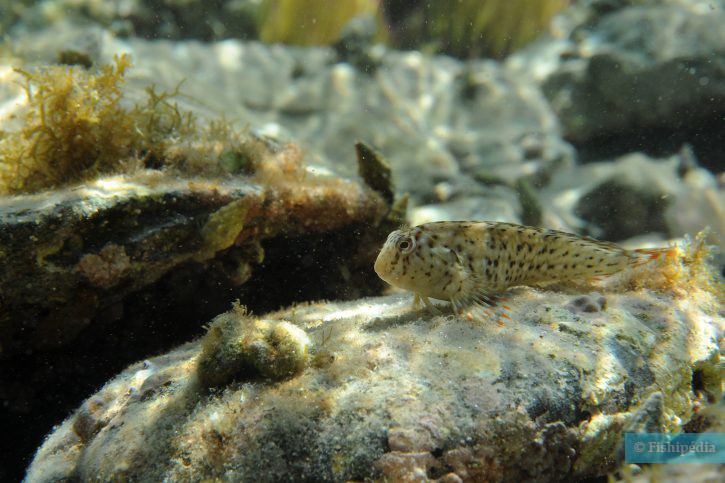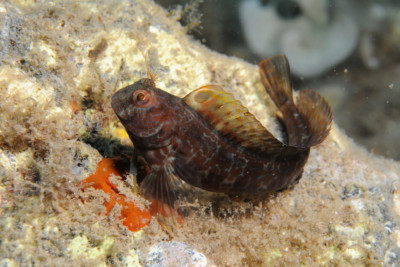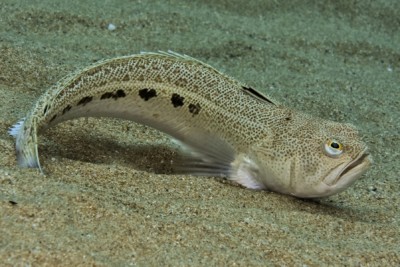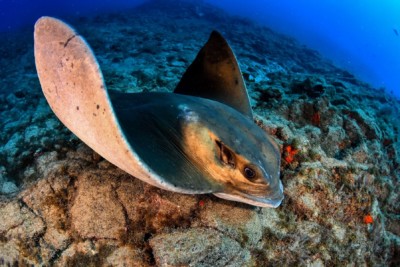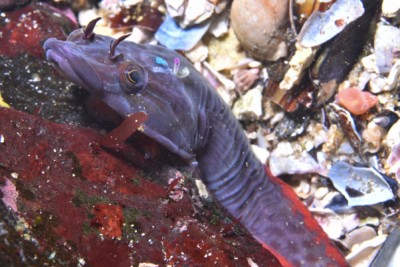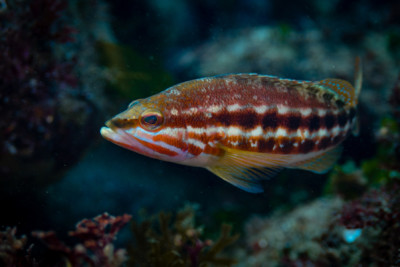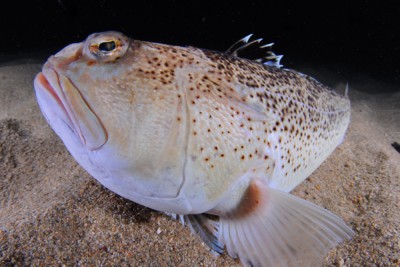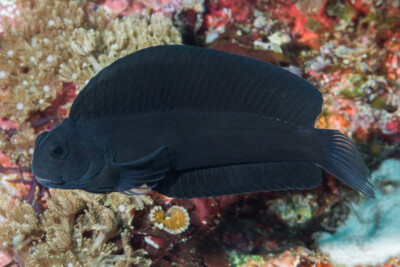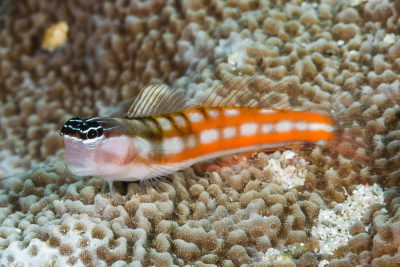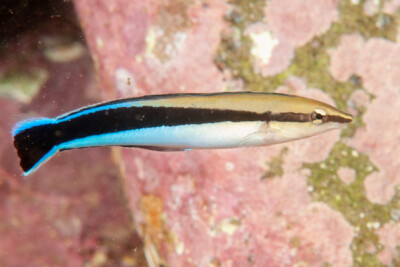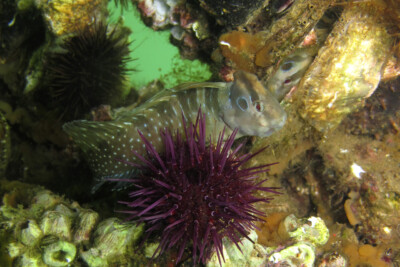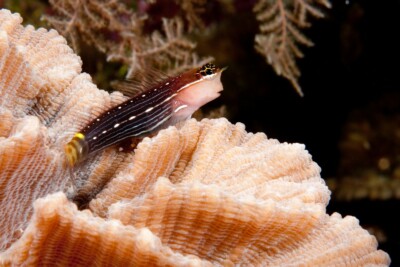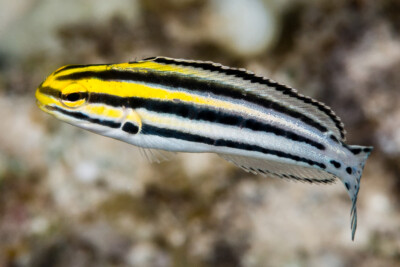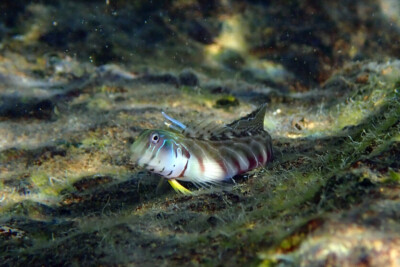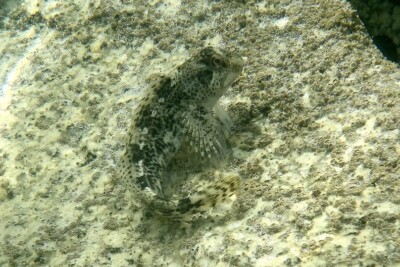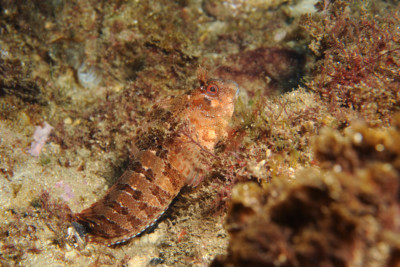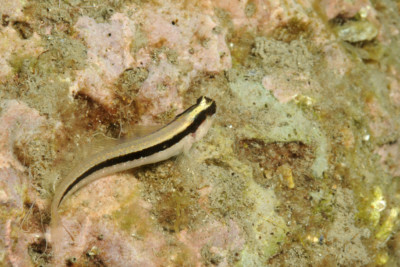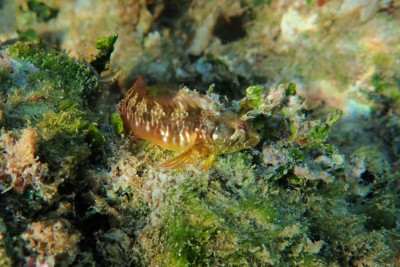rusty blenny
| Scientific name | Parablennius sanguinolentus |
|---|---|
| Descriptor | Pallas |
| Year of description | 1814 |
| IUCN category (World) | LC |
| Family | Blenniidae |
| Genus | Parablennius |
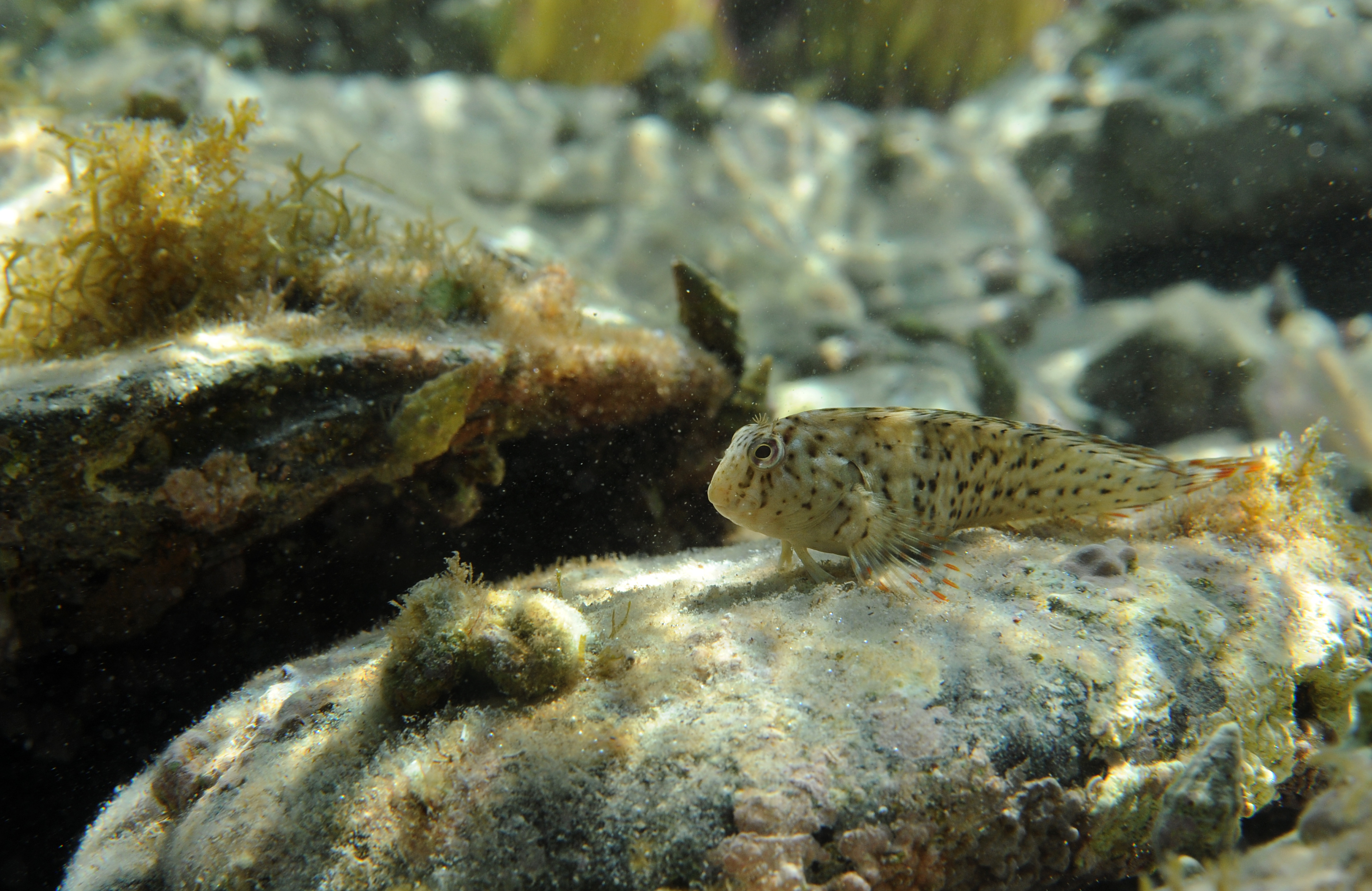

Introduction
The rusty blenny, Parablennius sanguinolentus, is a fish mainly found in the Mediterranean Sea and the Black Sea. It is also present not far from the Strait of Gibraltar on the coasts of the Atlantic Ocean.
Who is it?
Morphology
-
Average size13 cm
-
Maximum size20 cm
-
ShapeRectangular
-
Mimicrystone
-
Average size13 cm
-
Maximum size20 cm
-
ShapeRectangular
-
Mimicrystone
How to recognize This fish ?
With a slender, laterally compressed shape, this blenny is beige and brown in color, sometimes greenish, speckled with dark spots.
It has a flat mouth, opercula that meet under the head, and pelvic fins located just after the opercula.
Sexual dimorphism
There is no apparent dimorphism in this species.
Behaviour & Life cycle
-
dietherbivorous
-
Sociabilitysolitary
-
territorialYes
-
Way of livingdiurnal
Solitary like other blennies, the rusty blenny resides in "mixed" zones, between rocks and on the edges of rocks. It stays near areas covered with filamentous algae, preferably of the genus Ulva, which it feeds on. It sometimes makes "jumps" by swimming long distances between two rocks.
It is a particularly shy fish, difficult to approach. Its camouflage makes it practically invisible in rocky areas with a high concentration of algae.
Reproduction
-
Reproductionovipare qui pond sur substrat caché
The rusty blenny is an oviparous fish that lays 3000 to 12000 eggs, on covered substrate, under a rock or in a cavity, from May to June.
Harmless species
This species does not represent any particular threats to humans when encountered in its natural environment.
Origin and distribution
Conservation status of populations (IUCN)
What is its habitat?
Natural environment characteristics
-
Depth0 - 5 m
Biotope presentation
The rusty blenny is regularly seen near the shore. Although timid, it can be easily spotted, especially in low tide water retention areas. It frequents rocky floors covered with algae and plant debris.
Species of the same biotope
Fishkeeping
Not recommended
We do not recommend keeping this species in an aquarium. It has unpredictable needs which, if not met, generate significant stress, potentially leading to a shorter life expectancy, an interruption of its growth or the development of pathogens.
To go further
Sources & Contributions
Participation & Validation
The Fishipedia team and specialist contributors are committed to providing high-quality content. However, although the information comes from scientific sources or testimonials from specialists, the cards may contain inaccuracies.

Adrien Falzon

Benoit Chartrer
Translation
Translation done with the valuable contribution of our translators, who make this information available to a wider audience. We sincerely thank them for their commitment.
Scientific partners
Tags
Species of the same family
Same genus
Species of the same biotope
